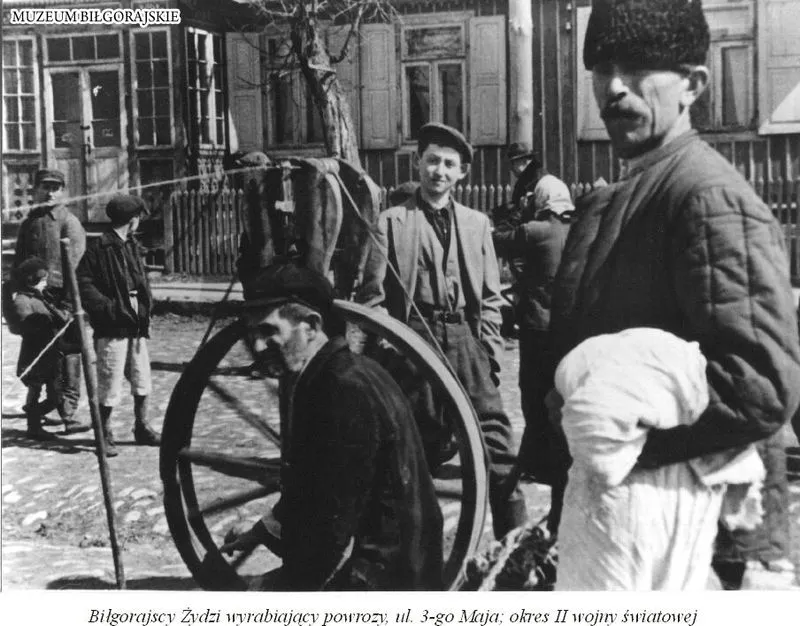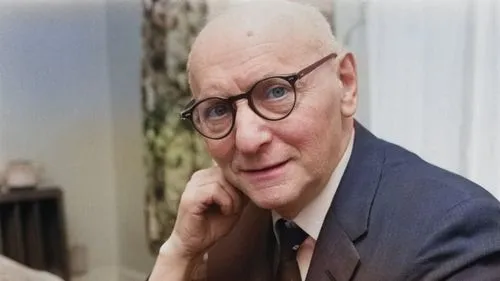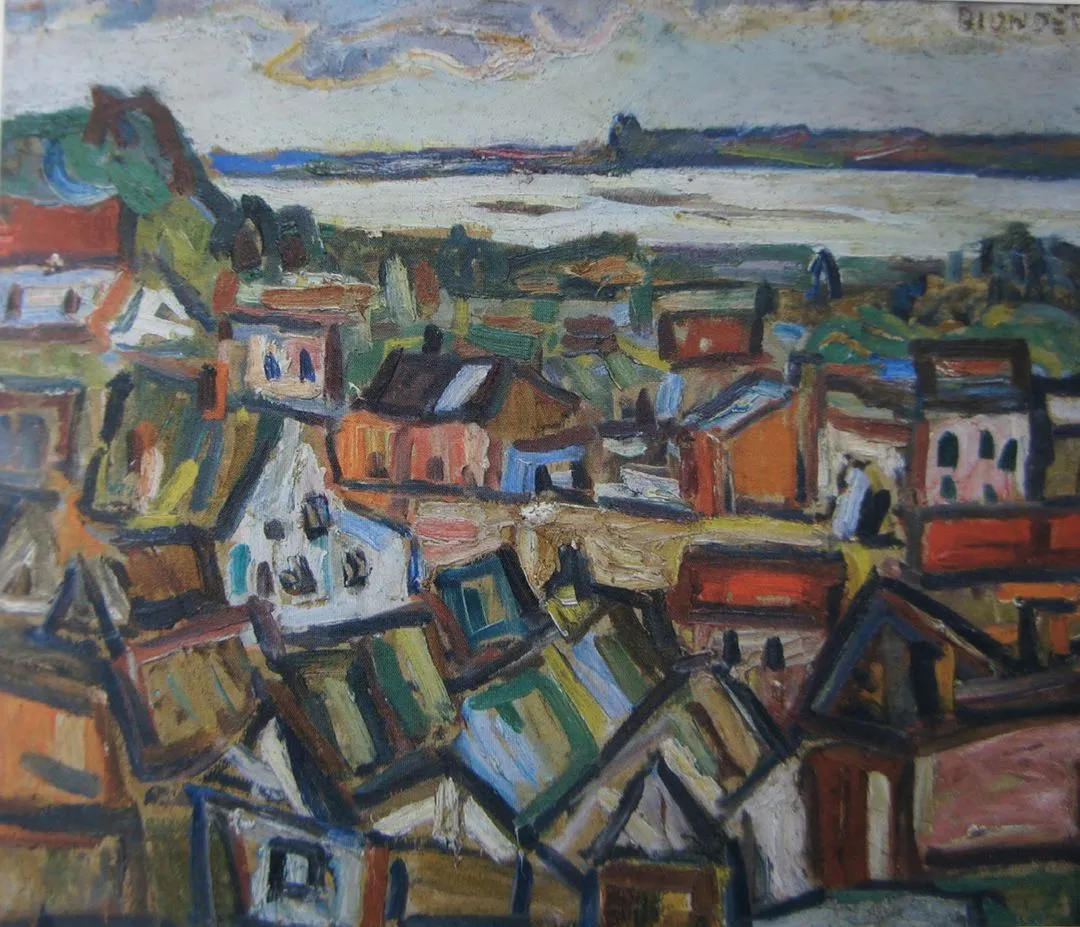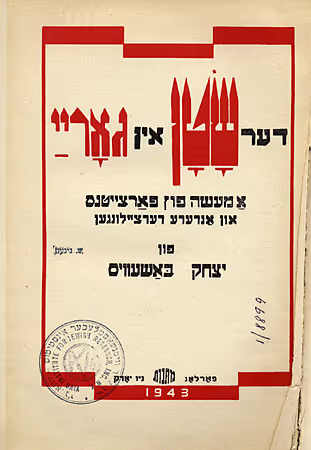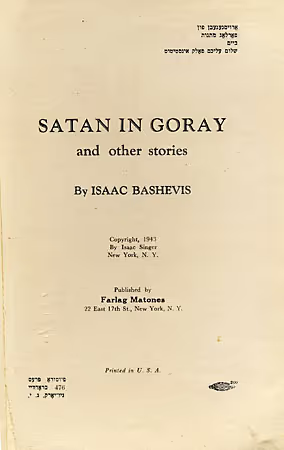Bashevitz Singer
Title: Isaac Bashevis Singer, Jewish author and playwright
Creator(s): Gotfryd, Bernard, photographer
For information see "Bernard Gotfryd," (https://hdl.loc.gov/loc.pnp/res.592.gotf)
Repository: Library of Congress Prints and Photographs Division Washington, D.C. 20540 USA
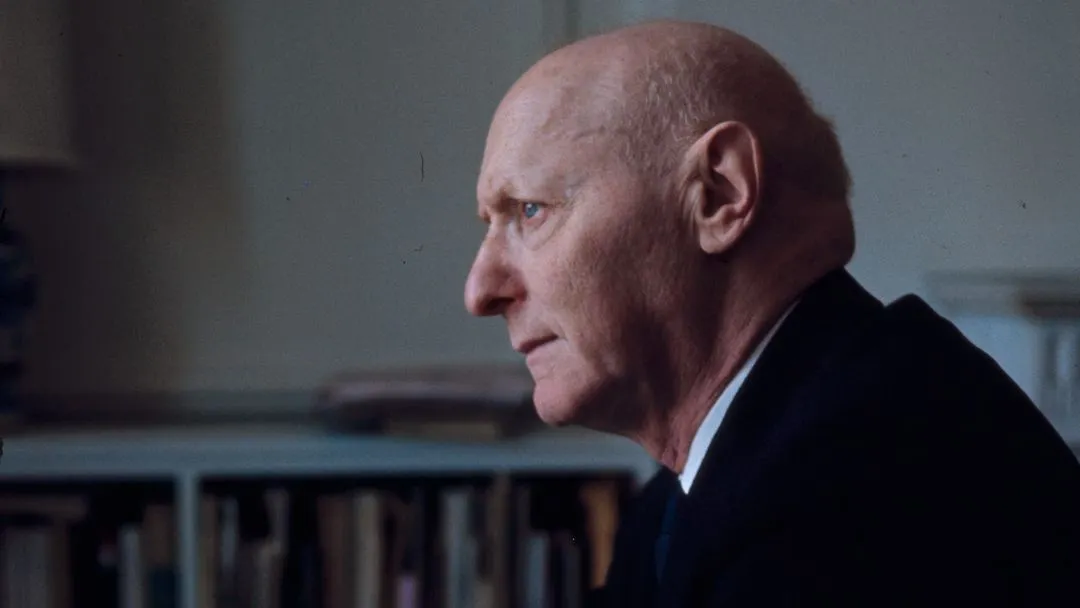
Shtetl of the Singer Family
Possibly the most celebrated of all Jewish literary families, the Singer family of writers, originated in Bilgoraj. The Singer patriarch was the rabbinic author Pinhas Menahem Mendl Singer (ca. 1872-1942). The first of the three talented siblings to make a name was Israel Joshua Singer (1893-1944) known as "Shie" in Yiddish, an avant-garde writer and thinker who began chronicling Hasidic life in 1915. In the 1920s, he joined Warsaw's intense literary circle and worked as a shortstory writer and journalist. I.J. Singer was particularly notable for his aversion to sentimentalizing Jewish life, for his lack of commentary or moralization, and, often, for a complete lack of plot. In the 1930s, he moved to New York City and wrote serialized novels for the Forverts (Forward), the city's premiere Yiddish newspaper. Among his best-known works were Erdvey (Earth Pain) and Perl un andere dertseylungen (Perl and Other Stories), both published in 1922, and perhaps his most famous novel, Di brider Ashkenazi (The Brothers Askenazi) from 1936. He was considered a very promising talent, but unfortunately died young. His style of objective observation of Jewish life influenced many other writers, including his younger brother, Isaac Bashevis Singer, who became the most popular of contemporary Yiddish writers. Their older sister, Esther, also wrote novels, but she never attained the fame of her brothers.
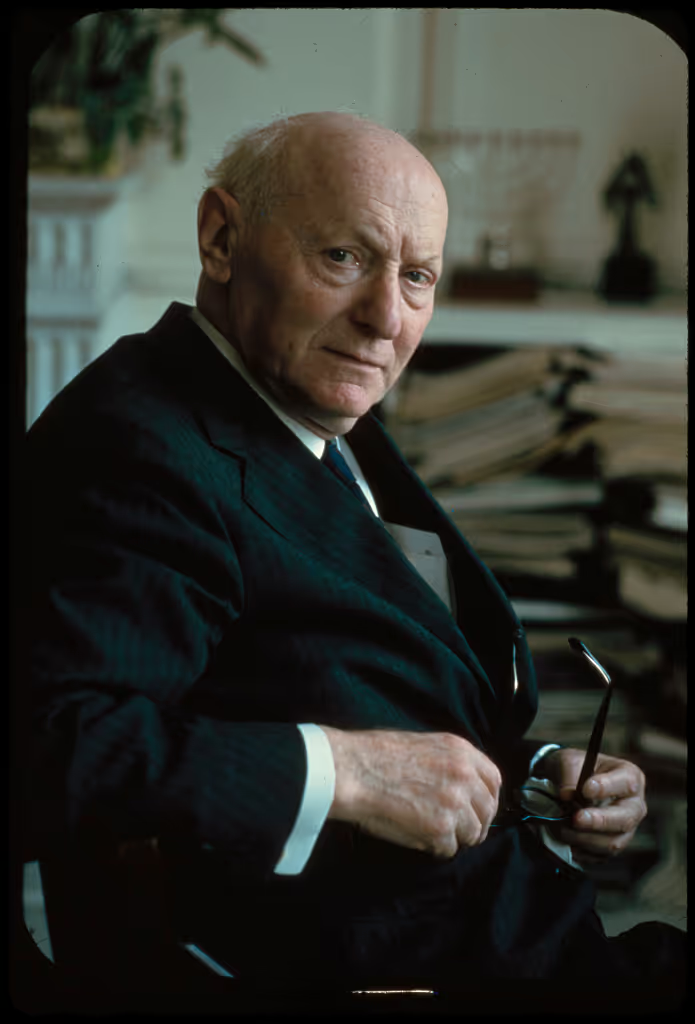
Isaac Bashevis Singer (1904-1991) was born in Leoncin, Poland and grew up mostly in Warsaw, but he spent three years of his childhood in the family shtetl of Bilgoraj. Recipient of a traditional religious education, he nevertheless developed a love for secular Yiddish culture and, inspired by his brother and other Yiddish writers, he set out to chronicle the world he saw around him: Hasidim, school rooms, village characters, peasants, rabbis, the day-to-day activities of shtetl life, and its folklore.
First publishing stories in 1925, he made his real debut in 1932 with the acclaimed novel, Der Sotn in Goray (Satan in Goray), which was based on the epidemic of false messianism that enveloped Jewish Europe in the 17th century. Like many writers of the age, I.B. Singer worked under several pen names, including "Y. Warszawski" for serious journalistic endeavors and "D. Segal" for lighter stories..
In 1935, he followed his brother to New York City and also took a job with the Forverts, where he wrote articles, short stories, and, very often, serialized novels. Gradually he developed a reputation as a master storyteller whose realistic novels detailed the simple truths behind every-day Jewish life. He went on to write many other celebrated works, such as Di Familye Mushkat (The Family Moskat ) in 1950, a novel about Jewish life in pre-World War II Warsaw, and The Slaves (1962), a historical romance set during the Chmielnicki massacres in 17th> century Poland. Literary critic Dan Miron observes:
"This witty, skeptical Jew, devoid of all pathos and full of humor, who combined sarcasm with tragedy and fatalism, traveled across the American and international literary scene like the 'last of his kind'…Isaac Bashevis was the last great emissary of the kingdom of Yiddish to the world of Western culture in the second half of the twentieth century."
Possibly the most celebrated of all Jewish literary families, the Singer family of writers, originated in Bilgoraj. The Singer patriarch was the rabbinic author Pinhas Menahem Mendl Singer (ca. 1872-1942). The first of the three talented siblings to make a name was Israel Joshua Singer (1893-1944) known as "Shie" in Yiddish, an avant-garde writer and thinker who began chronicling Hasidic life in 1915. In the 1920s, he joined Warsaw's intense literary circle and worked as a shortstory writer and journalist. I.J. Singer was particularly notable for his aversion to sentimentalizing Jewish life, for his lack of commentary or moralization, and, often, for a complete lack of plot. In the 1930s, he moved to New York City and wrote serialized novels for the Forverts (Forward), the city's premiere Yiddish newspaper. Among his best-known works were Erdvey (Earth Pain) and Perl un andere dertseylungen (Perl and Other Stories), both published in 1922, and perhaps his most famous novel, Di brider Ashkenazi (The Brothers Askenazi) from 1936. He was considered a very promising talent, but unfortunately died young. His style of objective observation of Jewish life influenced many other writers, including his younger brother, Isaac Bashevis Singer, who became the most popular of contemporary Yiddish writers. Their older sister, Esther, also wrote novels, but she never attained the fame of her brothers.
Isaac Bashevis Singer (1904-1991) was born in Leoncin, Poland and grew up mostly in Warsaw, but he spent three years of his childhood in the family shtetl of Bilgoraj. Recipient of a traditional religious education, he nevertheless developed a love for secular Yiddish culture and, inspired by his brother and other Yiddish writers, he set out to chronicle the world he saw around him: Hasidim, school rooms, village characters, peasants, rabbis, the day-to-day activities of shtetl life, and its folklore.
"This witty, skeptical Jew, devoid of all pathos and full of humor, who combined sarcasm with tragedy and fatalism, traveled across the American and international literary scene like the 'last of his kind'…Isaac Bashevis was the last great emissary of the kingdom of Yiddish to the world of Western culture in the second half of the twentieth century."
Is Yiddish a dying language? A ghostly insight...
I.B_ Singer won the Nobel Prize for Literature in 1978. During his short speech at the banquet, he clarified for the world his literary mission: "People ask me often. 'Why do you write in a dying language?' And I want to explain it in a few words. Firstly, I like to write ghost stories and nothing fits a ghost better than a dying language. The deader the language the more alive is the ghost. Ghosts love Yiddish and as far as I know, they all speak it. Secondly. not only do I believe in ghosts. but also in resurrection. I am sure that millions of Yiddish speaking corpses will rise from their graves one day and their first question will be: 'Is there any new Yiddish book to read?' For them Yiddish will not be dead."
צי איז ייִדיש אַ לשון וואָס האַלט בײַם אויסגיין?
אַ שדישע פּערספּעקטיוו אין 1978 האָט דער ייִדישער שרײַבער יצחק באַשעוויס זינגער געוווּנען די נאָבעל־פּרעמיע פֿאַר ליטעראַטור. בשעת זײַן רעדע בײַם באַנקעט האָט ער דערקלערט: „מע פֿרעגט מיך אָפֿט, ׳פֿאַר וואָס שרײַב איר אויף אַ שפּראַך וואָס גייט אויס?׳ וועל איך אײַך געבן צו פֿאַרשטיין בקיצור: ערשטנס, האָב איך ליב צו שרײַבן וועגן שדים—וואָס לעבעדיק דער שד. שדים האָבן ליב ייִדיש און אויף וויפֿל איך ווייס רעדן זיי אַלע ייִדיש. צווייטנס, נישט נאָר גלייב איך אין שדים, נאָר כ׳גלייב אויך אין תּחיית־המתים. איך בין זיכער, אַז אַ מאָל וועלן מיליאָנען ייִדן אויפֿשטיין תּחיית־המתים, וועלן זיי באַלד אַ פֿרעג טאָן: ׳צי איז דאָ עפּעס נײַעס צו לייענען אויף ייִדיש?׳ בײַ זיי וועט ייִדיש נישט זײַן טויט“.
A Literary Lineage: The Singer Family
Isaac Bashevis Singer was not the only literary voice in his family. His older siblings, Israel Joshua Singer and Esther Kreitman, also made lasting contributions to Yiddish literature—each with a distinct style and perspective shaped by their own experiences.

Esther Kreitman was the first of the siblings to pursue a literary path. Born in Poland, she eventually settled in London before World War I, where she balanced translation work with writing. Despite facing cultural and gender-based barriers in the Ashkenazi Jewish world of her time, she authored novels and short stories that challenged tradition and explored secular, feminist themes. Her semi-autobiographical novel, The Dance of the Demons, features their father—a deeply religious rabbi—as a prominent character. Kreitman’s writing often reflected her own frustrations with societal expectations placed on women. Though her work was largely overlooked by her brothers during her lifetime, Isaac later honored her memory with a dedication in his 1968 short story collection The Séance.
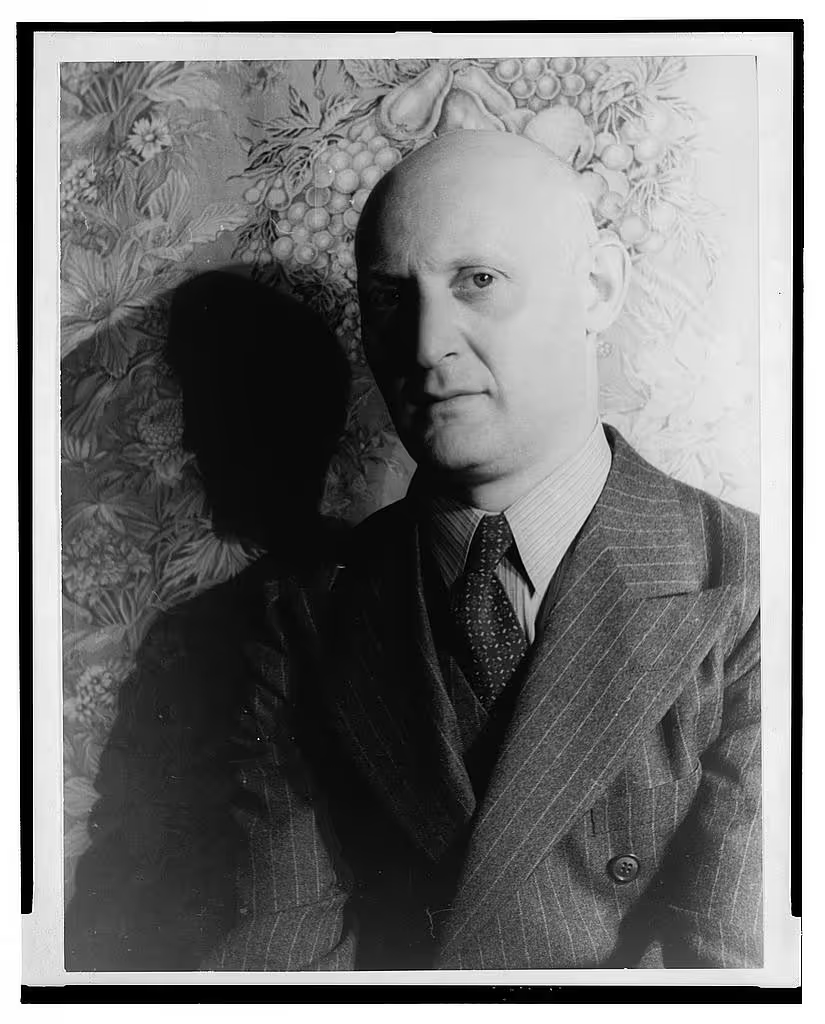
Israel Joshua Singer, the eldest brother, was already an acclaimed writer in Warsaw by the time Isaac began to write fiction. His early success as a novelist and editor made him a central figure in the Yiddish literary scene. Works like The Brothers Ashkenazi and The Family Carnovsky dealt with themes of secularism, generational shifts, and Jewish identity in modern society. Unlike Isaac, whose stories often wandered into mysticism and folklore, Israel Joshua’s novels tackled politics, philosophy, and science with a realist’s gaze. He was known for importing newspapers, scientific essays, and political thought into the Singer household—material that deeply influenced a curious younger brother.
When Israel Joshua emigrated to New York in the early 1930s, he paved the way for Isaac to follow. Upon Isaac’s arrival in 1935, Israel not only housed him but helped him land work at a Yiddish newspaper and edited his early manuscripts. In later years, Isaac would refer to him as a "spiritual father and master," acknowledging the debt he owed his older brother. The sudden death of Israel Joshua at age 50 marked a turning point—Isaac was forced to find his voice alone, which led to a literary career that eventually earned him the Nobel Prize in 1978.
Though Isaac’s international acclaim would eclipse that of his siblings, the literary foundation laid by both Esther and Israel Joshua is undeniable. Each of them wrote in Yiddish, their mother tongue, but filtered their experiences through unique lenses: Esther from the standpoint of a marginalized female intellectual, Israel Joshua as a modernist chronicler of Jewish life in flux, and Isaac as a folklorist, spiritual seeker, and master storyteller.
This sibling dynamic—and their shared Polish Jewish heritage—was instrumental in shaping 20th-century Yiddish literature. As writer Lorenzo Berardi observed in his essay The Polish Legacy of the Singer Siblings, while Isaac Bashevis Singer may have won the Nobel, it was the broader creative force of all three siblings that helped define a cultural legacy still felt today.
References
- Kreitman, Esther. Der Sheydim-Tants (1936), translated as Deborah and The Dance of the Demons.
- Isaac Bashevis Singer, The Séance and Other Stories, Farrar, Straus and Giroux, 1968.
- Singer, Israel Joshua. The Brothers Ashkenazi (1936); The Family Carnovsky (1943).
- Berardi, Lorenzo. The Polish Legacy of the Singer Siblings, Fratelli Singer, November 24, 2018.
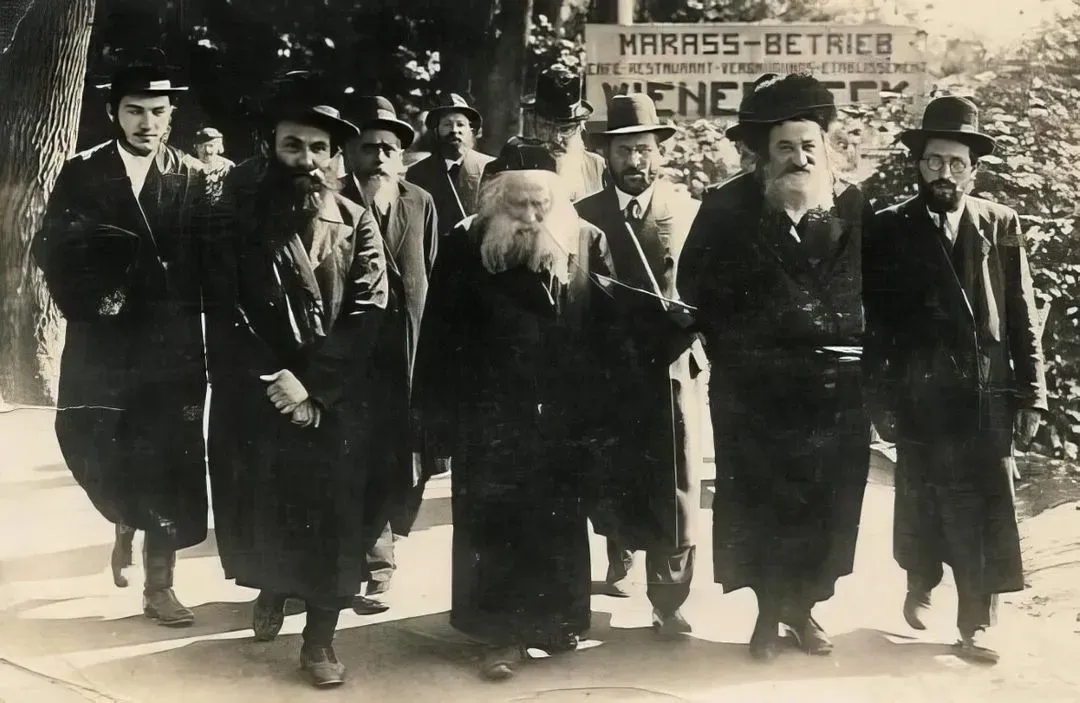
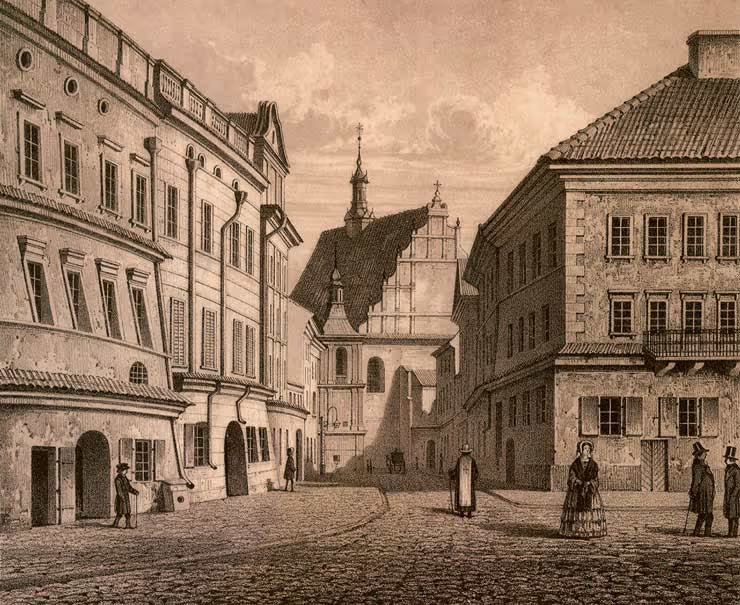
.avif)
